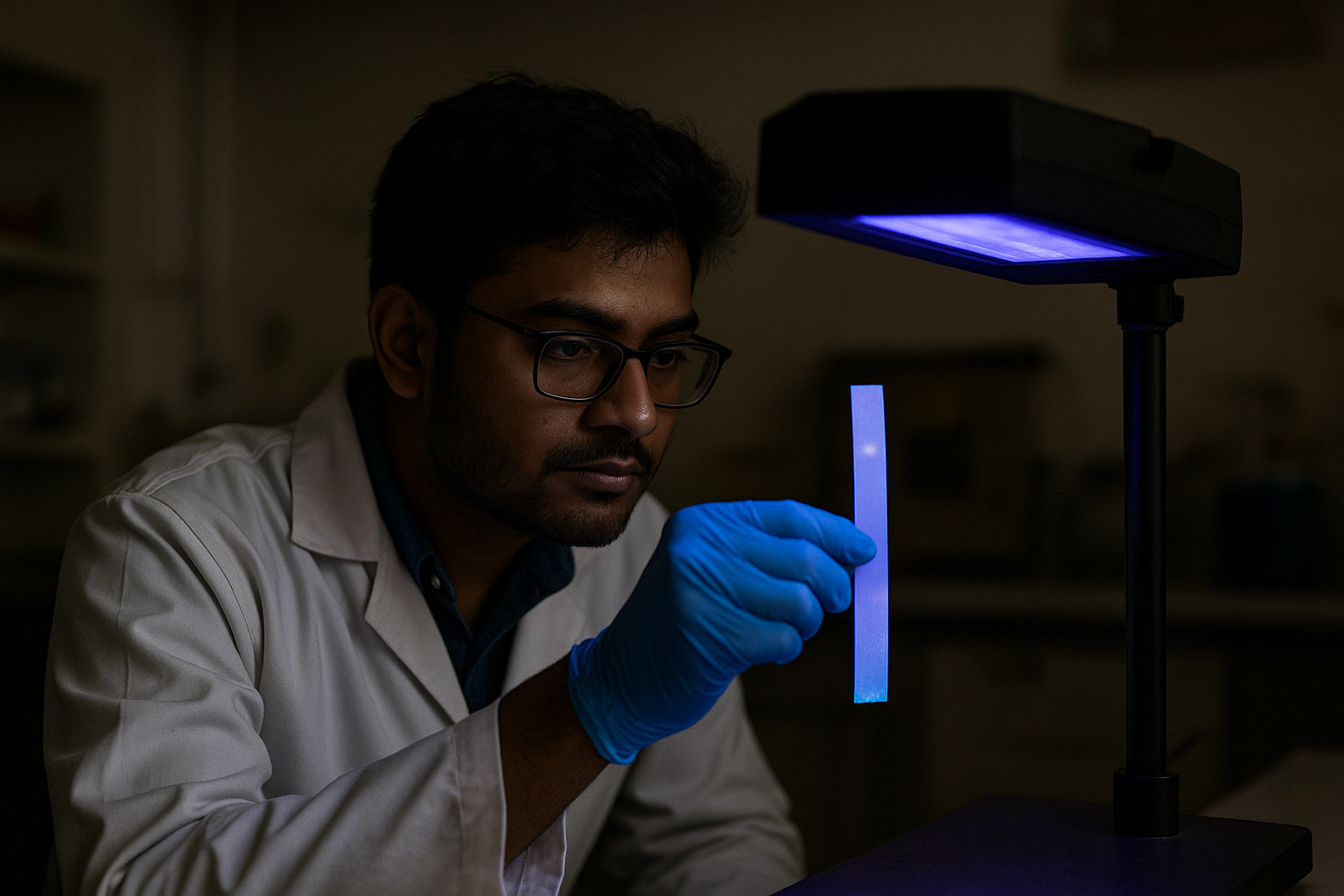What’s New?
A research team at IIT Guwahati has unveiled a nanosensor that can instantly detect carcinogenic water contaminants like mercury and antibiotic residues using a clever blend of milk protein, thymine, and carbon dots. It lights up under UV, then dims in just under 10 seconds when harmful substances are present.
Why It’s a Game-Changer for Water Safety
Clean water is precious. Yet rising pollution from industrial discharge, unchecked antibiotic use, and heavy metals is putting people’s health at risk triggering issues from antibiotic resistance to cancer and organ damage. Rapid, low-cost detection tools like this nanosensor could be a vital first line of defense.
How the Nanosensor Works
- Crafted from milk protein and thymine-derived carbon dots biocompatible and cheap.
- Glows under UV light. When exposed to mercury or tetracycline antibiotics, the glow dims noticeably almost like a visual alarm.
- In lab tests, it flagged mercury levels as low as 5.3 nanomolar (1.7 parts per billion) and tetracycline between 10–13 nanomolar both well under safety thresholds.
- Applied to real-world samples: river water, tap water, milk, urine, even blood serum.
- The team developed paper strips coated with the sensor, enabling quick, on-the-spot testing under a UV lamp.
From the Research Lab: Real Voices
Professor Lal Mohan Kundu of IIT Guwahati, who leads the sensor development, shared:
“We wanted a fast, sensitive, and economical test not just for water but also for biological fluids. Mercury is a known carcinogen, and excessive antibiotics have serious consequences. Our sensor delivers accurate results within 10 seconds.”
Why It Matters
Traditional water-testing methods are often slow, expensive, and inaccessible in remote areas. This sensing technology is low-cost, portable, and remarkably swift. Beyond environmental monitoring, it could be adapted for medical diagnostics meaning lighter loads on labs and faster public health responses.
Where It Goes Next
- The findings have been published in Microchimica Acta, a respected scientific journal.
- The tech is still laboratory-grade and needs field testing and validation.
- Steps are being taken toward commercialization and real-world deployment in water-testing kits and diagnostic substrates.
A Closing Thought
This tiny nanosensor may be one of the smallest breakthroughs in size but it has the potential for a massive impact. From ensuring water safety in rural India to advancing global health diagnostics, this innovation stands out as a bright spark in environmental science and public health.



